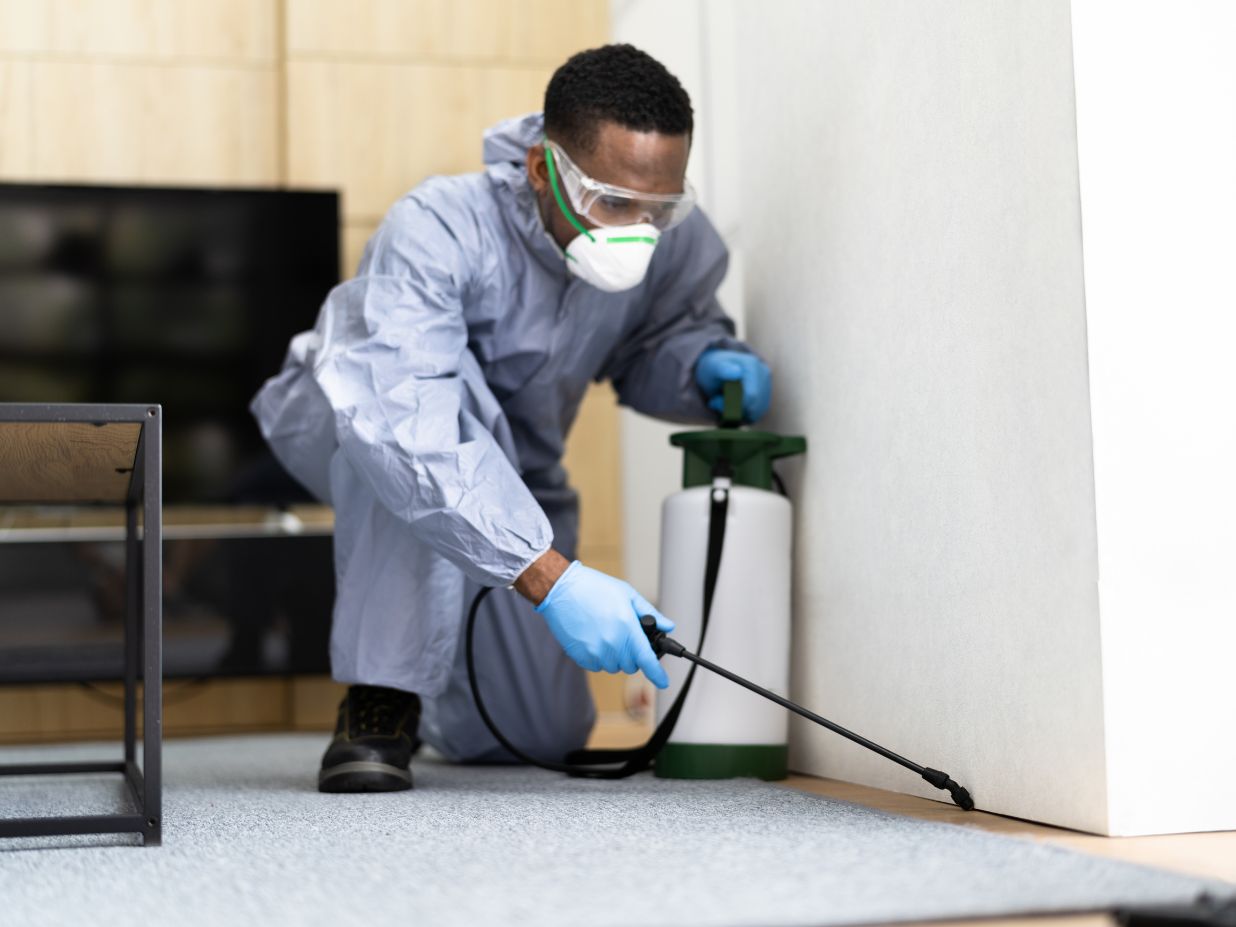Residential pest control is essential for maintaining a healthy and safe living environment. Various pests can infest homes, causing damage and posing health risks. Here’s an overview of common types of residential pest control, the pests that most frequently invade homes, and strategies for eliminating infestations, including termites.
Types of Residential Pest Control:
- Chemical Pest Control: This involves using pesticides to eliminate pests. It is effective but must be used cautiously to avoid harming pets and humans.
- Biological Pest Control: Uses natural predators or parasites to control pest populations. For example, introducing ladybugs to control aphids.
- Mechanical Pest Control: Involves physical methods like traps, barriers, and electronic devices to manage pests.
- Integrated Pest Management (IPM): A holistic approach combining multiple strategies to effectively manage pests with minimal environmental impact.
Common Household Pests:
- Ants: Attracted to food and water, ants can enter homes in large numbers.
- Cockroaches: Known for their resilience, cockroaches spread diseases and can trigger allergies.
- Rodents: Mice and rats can cause structural damage and spread diseases.
- Bed Bugs: These pests feed on human blood and are notoriously difficult to eradicate.
- Termites: Termites can cause significant structural damage by feeding on wood, making them one of the most destructive pests.
Eliminating Termite Infestations:

- Identification: Look for signs of termites, such as mud tubes, discarded wings, and wood damage. Early detection is crucial for effective control.
- Chemical Treatments: Termiticides can be applied to the soil around the foundation to create a barrier. Liquid termiticides and bait stations are common methods.
- Bait Systems: These systems attract termites to a bait containing a slow-acting toxin. Termites carry the bait back to the colony, eventually eliminating it.
- Fumigation: For severe infestations, fumigation might be necessary. This involves covering the house with a tent and filling it with a gas that kills termites.
- Physical Barriers: Installing physical barriers like stainless steel mesh or sand around the foundation can prevent termites from entering the home.
- Regular Inspections: Regular professional inspections help detect termite activity early, allowing for prompt treatment before significant damage occurs.
Conclusion: Managing residential pest infestations requires understanding the types of pests and using appropriate control methods. Chemical, biological, mechanical, and integrated pest management strategies can effectively manage pests like ants, cockroaches, rodents, bed bugs, and termites. For termites, early identification and a combination of chemical treatments, bait systems, fumigation, and physical barriers are key to protecting your home from severe damage. Regular inspections and proactive measures can keep your living environment pest-free and safe.
You may also like
Exploring Features and Benefits of Wired Alarm Systems
Wired alarm systems are a staple of security for both residential and commercial properties. These systems offer a reliable and durable solution for protecting your home or business from various threats, such as burglary, fire, and gas leaks. Unlike wireless systems, wired alarms are directly connected to a control panel through physical cables, providing a… Continue reading Exploring Features and Benefits of Wired Alarm Systems
Wireless Alarm Systems for Homes and Businesses: Types and Benefits
Wireless alarm systems have become a popular choice for securing residential and commercial properties due to their ease of installation, flexibility, and advanced technology. Unlike traditional wired systems, wireless alarms do not require extensive cabling, making them less invasive to install and easier to expand or modify. This article will explore the different types of… Continue reading Wireless Alarm Systems for Homes and Businesses: Types and Benefits
How To Prevent Residential Pest Infestations
Preventing residential pest infestations is essential for maintaining a healthy and comfortable living environment. Regular inspections and timely interventions can help protect your home from various pests. Here’s an overview of pest infestation prevention, termite and pest inspection services, and the interventions used to eliminate infestations. Prevention of Pest Infestations: Termite and Pest Inspection Services:… Continue reading How To Prevent Residential Pest Infestations
